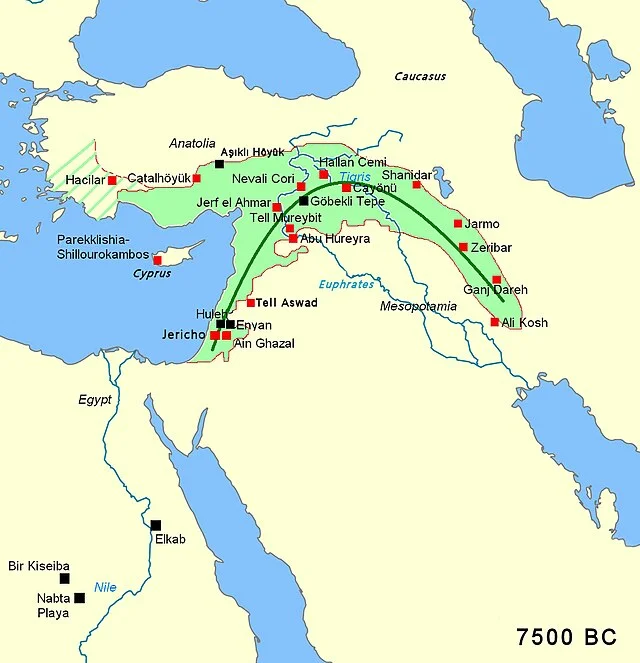Mureybet is a significant prehistoric site located in northern Syria along the Euphrates River. It offers key insights into human settlement patterns during the Neolithic period. The site was first excavated in the 1960s, revealing important findings about early agricultural societies.
Get your dose of History via Email
Discovery and Excavation
French archaeologist Jacques Cauvin led the excavation of Mureybet in 1964. His team uncovered four distinct occupation layers, dating from around 10,200 BC to 8,000 BC. Each layer revealed different phases of human development, from hunter-gatherer communities to early agricultural societies. These findings have contributed to our understanding of the transition from nomadic to settled life.
Importance in the Neolithic Revolution
Mureybet is crucial for understanding the Neolithic Revolution, a period marked by the shift from hunting and gathering to agriculture. During the site’s earliest phases, its inhabitants hunted wild animals and gathered plant foods. However, by around 9,000 BC, evidence shows that they began cultivating plants like wheat and barley. This marks one of the earliest instances of agriculture in the Near East.
Architecture and Settlement
The architecture at Mureybet provides insight into early human settlements. In the earliest phases, people lived in round, semi-subterranean houses built with mudbrick. As the settlement developed, these structures became more complex, with the addition of stone foundations. The evolving architecture suggests increased social organization and permanence in settlement.
Subsistence Practices
Mureybet’s inhabitants relied on a combination of hunting, gathering, and eventually farming. Early on, the people hunted animals such as gazelles and wild cattle. Over time, evidence of domesticated animals like goats and sheep began to appear. The shift to agriculture and animal domestication played a significant role in the community’s long-term survival and development.
Symbolism and Artifacts
Several artifacts found at Mureybet provide clues about the symbolic and ritual practices of its inhabitants. Small carved stone figures, which likely had religious significance, were discovered in the later phases of the settlement. These figurines, along with decorated pottery, suggest that Mureybet’s people developed a symbolic culture as they transitioned to a more sedentary lifestyle.
Decline and Abandonment
Mureybet was abandoned around 8,000 BC, possibly due to environmental changes or shifts in human settlement patterns. By this time, many Neolithic communities were forming larger, more complex societies. The decline of Mureybet coincides with the rise of other prominent Neolithic sites in the region, such as Tell Abu Hureyra.
Conclusion
Mureybet is an essential archaeological site for understanding the early Neolithic period in the Near East. The site provides critical evidence of the transition from a hunter-gatherer lifestyle to one based on agriculture and settled communities. Its architectural remains, subsistence practices, and symbolic artifacts offer valuable insights into the development of human civilization during this transformative period.
Source:

